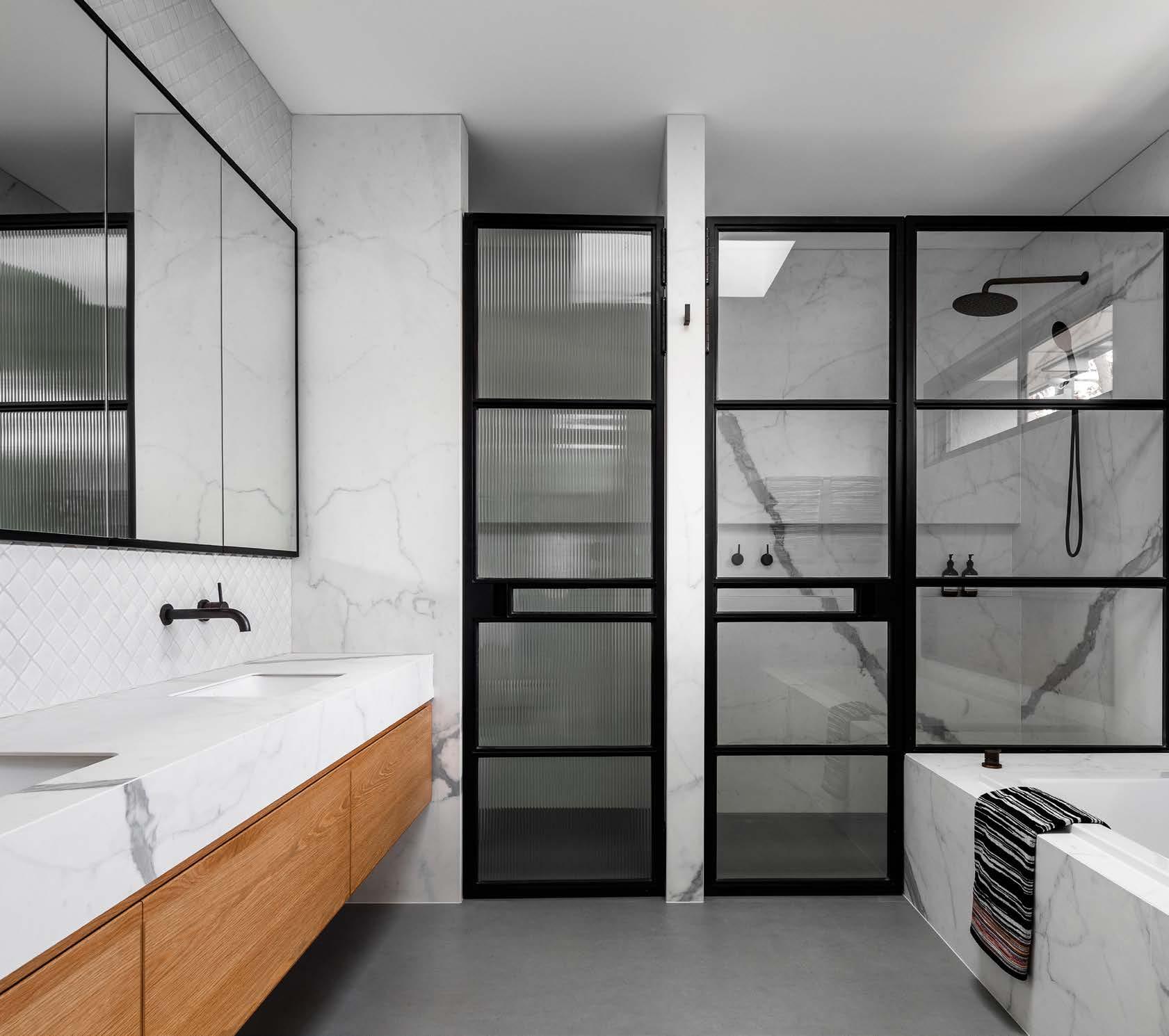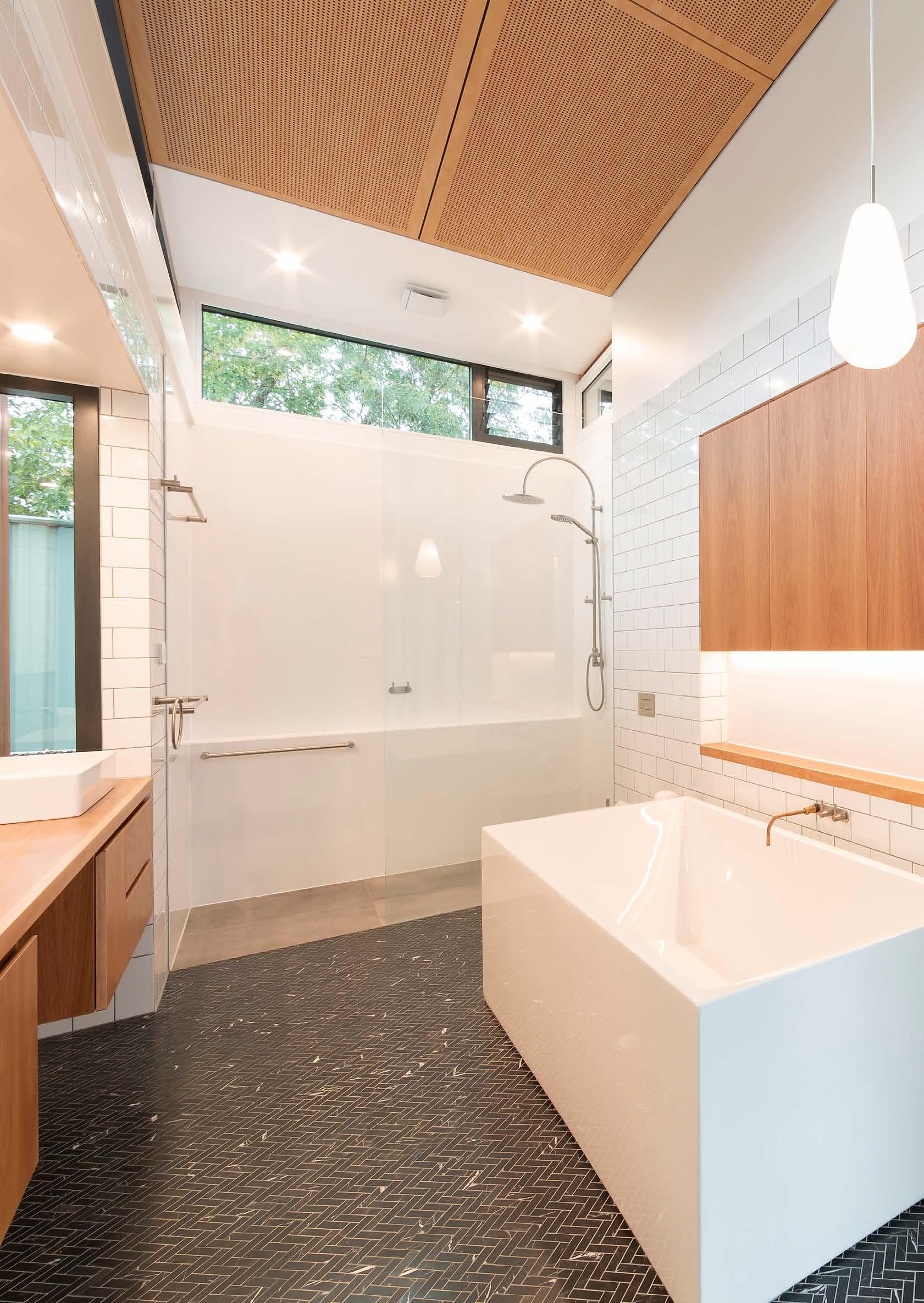
8 minute read
BEFORE YOU MOVE IN
from BUILD 2021
Moving into a new home is an incredibly exciting time and is the final stepping stone before you truly begin to feel settled in your new space. While it might seem like the easiest part of the process, there is a lot that you still need to think about when it comes to making sure your home is ready to live in. We’ve created a checklist for you to mark off each task to ensure you don’t miss a thing!
Select a moving company to assist you with the process – while this isn’t necessary, it can save a lot of time and energy, however this is one task you can choose to complete yourself Apply for leave if needed, once you know your moving date Are you leaving a rental property? Make sure you’ve organised end of lease cleaning to be undertaken If you’re leaving a rental property, you’re obliged to provide your landlord with notice of your intention to move out. Refer to your tenancy agreement. Connect electricity Connect internet
Connect water Connect gas Arrange for your utilities to be disconnected from your previous address
Redirect all your mail to your new address
Change your licence address – this can be done through Access Canberra if you live in the ACT Update your address detail with the Australian Taxation Office
Be sure to change your address on the Electoral roll
Ensure you’re happy that any defect rectification work has been carried out
Collect all the keys to your current home to provide to the next owners or hand back to the landlord
HOME OWNERS WARRANTY INSURANCE / FIDELITY FUND COVER

Architekt Grüne Häuser, Deakin
WHAT IS HOME WARRANTY INSURANCE?
In 1988, the ACT Government introduced mandatory Residential Building Insurance, then in 2002, legislated to enable Fidelity Funds to be established in the ACT. The principal purpose of the insurance or Fidelity Fund Certificate is to provide the consumer with protection against financial loss.
WHY WOULD MY BUILDER NEED IT TO COMPLETE WORKS ON MY HOME?
Under the Building Act 2004 (ACT) it is a requirement that a licensed builder must obtain complying residential building work insurance (also referred to as home warranty insurance) or a Fidelity Fund certificate on behalf of the lessee from an approved Fidelity Fund scheme or insurer before commencing any building work over $12,000. There are some exemptions provided and if you’re not sure, have a chat with your builder. Fidelity Fund certificates or home warranty policies are required for construction of a class 1 building or class 2 building (town house, units, apartments) up to 3 storeys in height, and certain alterations or additions to existing residence where the work is valued at $12,000 and is structural in nature. Fidelity Fund certificates or home warranty policies are not required for class 10 structures such as swimming pools, fences, landscaping, mail boxes or garages (unless structurally adjunct to the class 1 structure). The appointed Building Certifier may assist if you are unsure about these requirements.
WHEN CAN A CLAIM BE MADE?
A claim may be made for incomplete building work if the builder becomes insolvent, disappears or dies, during the contract period. A claim may also be made for defects that come to light after completion of the project in the Statutory Warranty period if the builder dies, disappears or suffers an insolvency event. The legislation provides that a Fidelity Fund certificate or home warranty Insurance policy provides maximum coverage of $85,000. If no work has been completed, and only a deposit paid, the maximum that you can claim is $10,000. A Fidelity Fund certificate requires a claim to be made within 90 days.
HOME MAINTENANCE

Maintaining your home is crucial to ensuring the longevity of the structure over the coming years. Completing regular home maintenance will also save you time and money in the future and more importantly, it will provide you with the peace of mind that you are living in a safe home. But what does home maintenance involve?
OUR HOME MAINTENANCE CHECKLIST:
Cleaning Maintenance This is the simplest form of maintenance. Besides giving a bright appearance, cleaning can prevent a build-up of mould and can stop moisture being trapped which can cause rust or rot. Cleaning home maintenance should include:
Cleaning guttering as necessary to remove leaves, mud and other foreign matters
Removing rubbish accumulating close to walls
Checking that petrol and other flammable liquids are stored in a well ventilated area as far from the main portion of the house as possible, out of reach of children and pets and away from electric motors
Cleaning aluminium window and door frames
Cleaning insect screens, checking for damage and replacing mesh if necessary
Checking for any increase in bushfire hazards through growth or accumulation of rubbish and removing the hazards Preventative Maintenance
Regular repainting of timber, sealing of joints and keeping vents and pipes clear can prevent damage occurring. Preventative home maintenance includes:
Making sure that exterior underfloor vents are not covered or clogged up
Checking underfloor ventilation for pests in the underfloor spaces
Checking that water drains and sumps are clear at regular intervals and after heavy rain
Checking and repairing air-conditioning and heating equipment
Chase Building Group and JWLand, Braddon

Corrective Maintenance
Early attention to repairs can prevent more serious damage. Corrective home maintenance includes:
Repairing and/or painting outdoor timber and structures Checking for leaking taps and replacing washers immediately Having inside painting and decorating undertaken when required In bushfire hazard areas check that your garden hose is sound and remains connected to the tap nearest the most obvious hazard. In hazardous areas you should keep a few buckets of sand and water handy Checking underfloor ventilation for pests and checking for leaking plumbing Checking that the tiles on your roof are intact
Replacement
When an item has reached the end of its economic life span or it has not been maintained it must be replaced. This can be expensive For exterior paint work - repainting is likely every 4 to 6 years for example
WHAT HAPPENS IF I NOTICE A BUILDING DEFECT?
Your builder is obliged to fix up any building defects if they occur within the relevant statutory warranty timeframe. The building works will be covered by a statutory warranty period as prescribed in the legislation. Under this warranty, your builder is responsible for fixing structural building defects for a period of six years starting from the completion of the work or no later than when the date of the Certificate of Occupancy was issued, or two years for defective non-structural work. However, your builder is not responsible for maintenance work, or problems that occur as a result of a lack of maintenance.
SAFETY
ASBESTOS

The word asbestos rings alarm bells with many people, especially those of us in the ACT. Asbestos is a group of naturally occurring minerals, exposure to which can cause life-threatening illnesses. Asbestos is present in nearly every home that was built before 1985 and is usually located in the eaves or in wet areas like bathrooms and laundries. The experts tell us that when materials that contain asbestos are in good condition and are left undisturbed, they do not pose a risk to your health. It is the word “undisturbed” that makes all the difference. If you are doing home repairs or renovations yourself, then you need to be aware that this might disturb asbestos fibres. If your home was built prior to 1985, Master Builders ACT recommends that you engage a qualified tradesperson to conduct any repairs or renovations as they ought to be familiar with both safety and compliance obligations in respect of asbestos. You can read more about asbestos here: http://www.asbestostaskforce.act.gov.au/.
Brother Projects, Weston
SILICA
Silica is also a naturally occurring mineral that is found in many rocks and soils. When silica takes the form of ‘crystalline silica’ it can become a health hazard when material containing silica is blasted, crushed, cut or drilled by machinery. Silica is commonly found in many ordinary items used in the construction of a home, such as engineered stone benchtops, asphalt, bricks, cement, tiles and pavers. Similar to asbestos, the danger of silica to you and your family is limited when it is left undisturbed. However, if you decide to carry out modifications or renovations to your home (such as modifying the kitchen benches), Master Builders ACT strongly recommends you engage a qualified tradesperson to ensure that any work is carried out safely, with the appropriate equipment and in the appropriate manner.
KEY CONTACTS

MASTER BUILDERS ASSOCIATION ACT www.mba.org.au (02) 6175 5900
ACT GOVERNMENT www.planning.act.gov.au/build-buy-renovate 13 22 81
EVOENERGY www.evoenergy.com.au 13 23 86
ICON WATER www.iconwater.com.au 02 6248 3111
ACTEW AGL www.actewagl.com.au 13 14 93
Meticulous by Habit
Where attention to detail is second nature and a quality build is first.
www.metric.homes



Universal Trusses is one of Australia’s most advanced, state-of-the-art factories, supplying floors, frames and roofs for all building types and sizes.
Universal Trusses is a family business supplying the region for more than 20 years.
Teamed with knowledgeable and friendly staff, the service offered by the team at Universal Trusses is second to none.
www.universaltrusses.com.au
Australia’s Most Advanced Truss and Frame Factory
For more information about products and services contact Universal Trusses on:
52 Shepherd St Hume ACT 2620 I PO Box 563 Fyshwick ACT 2609 P 02 6260 1436 F 02 6260 1462 E office@universaltrusses.com.au
www.universaltrusses.com.au
Are you accredited with appropriate authorisation to work on or near our electricity network?

There’s little room for error when working around electricity and the consequences of an electrical safety incident can be catastrophic.
Anyone working on or near the electricity network in the ACT and surrounding region must be accredited with Evoenergy and have appropriate authorisation before work can commence.







